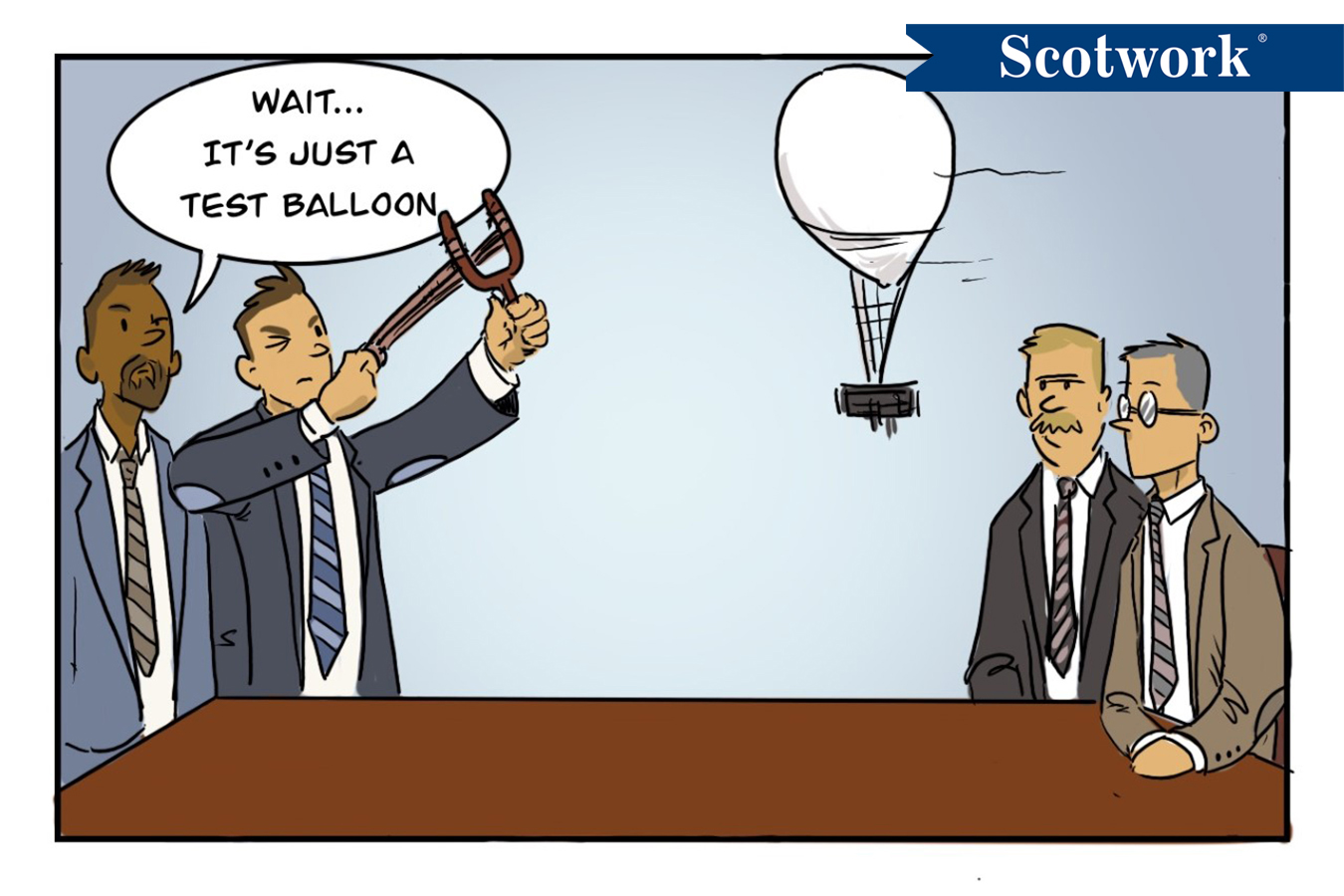Lately, there’s been a lot of talk about balloons. In all honesty, I had no idea how much old technology is still used to do so many things, from studying weather patterns to spying on other countries. It got me thinking about using balloons in negotiations. While a bouquet of balloons (or balloon animals) might bring levity to the conversation, I’m thinking more about the use of test balloons.
In negotiations, we frequently find that people are reluctant to share information or take action because they just don’t know what to do, or they’re fearful of their next step. That fear usually comes from another fear: the other side’s reaction. Concern about getting a negative response can be paralyzing. Confidence comes when people get a better sense of how the other side might react. This is where a test balloon can come in handy.
Test balloons are used to gauge interest in or reaction to an idea. An idea gets floated out, much like a balloon. If it’s well-received, it may continue its progress. If it’s not, it can easily be abandoned or “popped.” In a negotiation, this can be an extremely useful technique for evaluating the direction in which you may want to take the conversation. There are several ways to employ a test balloon . . .
Use hypothetical statements. Creating a hypothetical scenario to which someone can react is a safe way to explore the space. For instance, instead of telling someone that you’re going to do something, try saying, “Just suppose I could do this. Would you be willing to do . . . ?” This opens the door to ideas while also offering an opportunity to gauge reaction. If you get a favorable response, continue exploring. If you don’t, change the hypothetical till you do.
Use qualifying language. When making statements, people frequently use qualifying language unintentionally. When it’s utilized intentionally, however, it can be a valuable tool for assessing how favorably something might be received. Qualifying language usually begins with a qualifying action, such as, “We can likely do . . .” or “We likely can’t do . . .” Depending upon the other side’s reaction, you can test how likely you are to proceed with that idea.
Use either/or choices. This one’s really powerful when you’re trying to test which concept or idea might be more favorable to the other side. It’s as simple as putting forth a choice: “Would you like to do A or B?” Their response will help you understand their priorities and preferences, which you can then use to put forward something more definitive.
The more information we have, the better position we’ll be in to navigate the jet streams of a negotiation. These test-balloon techniques allow you to try out an idea, gauge reaction, and adjust accordingly. This, in turn, will help you understand more about the other side, reducing fear regarding how they might react. Happy ballooning!
We Can Help Your Negotiators Test the Other Side’s Reaction.
Is your team reluctant to share information or take action because they don’t know how the other side will react? Concern about getting a negative response can be paralyzing. We can help! Drawing on nearly 50 years of real-world negotiating experience, we’ll assist you with getting better deals, saving time, and creating value for all involved — not to mention preserving and even strengthening relationships. Let us partner you with one of our advisers, ensuring that you’ve got the broadest view of your deal.

